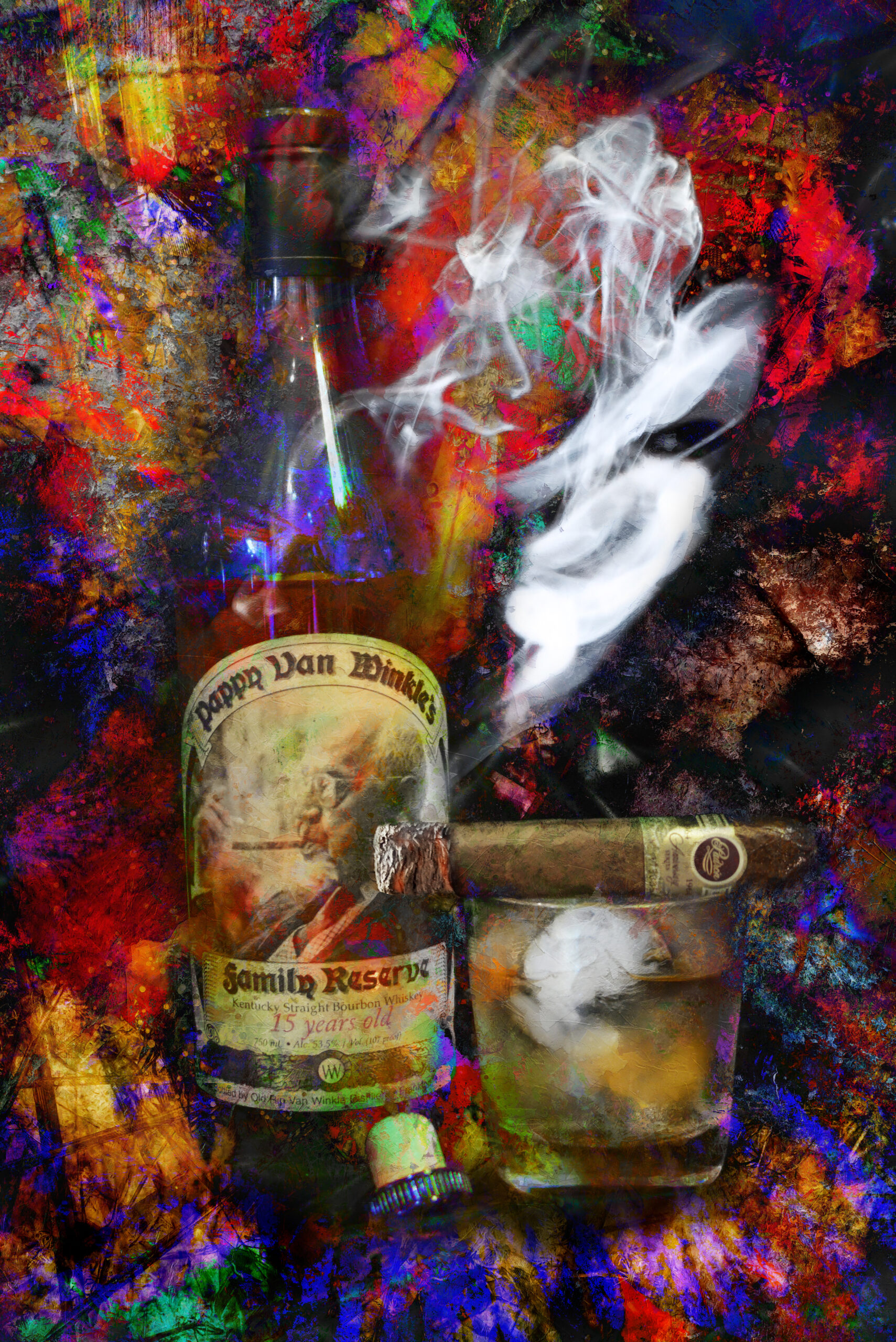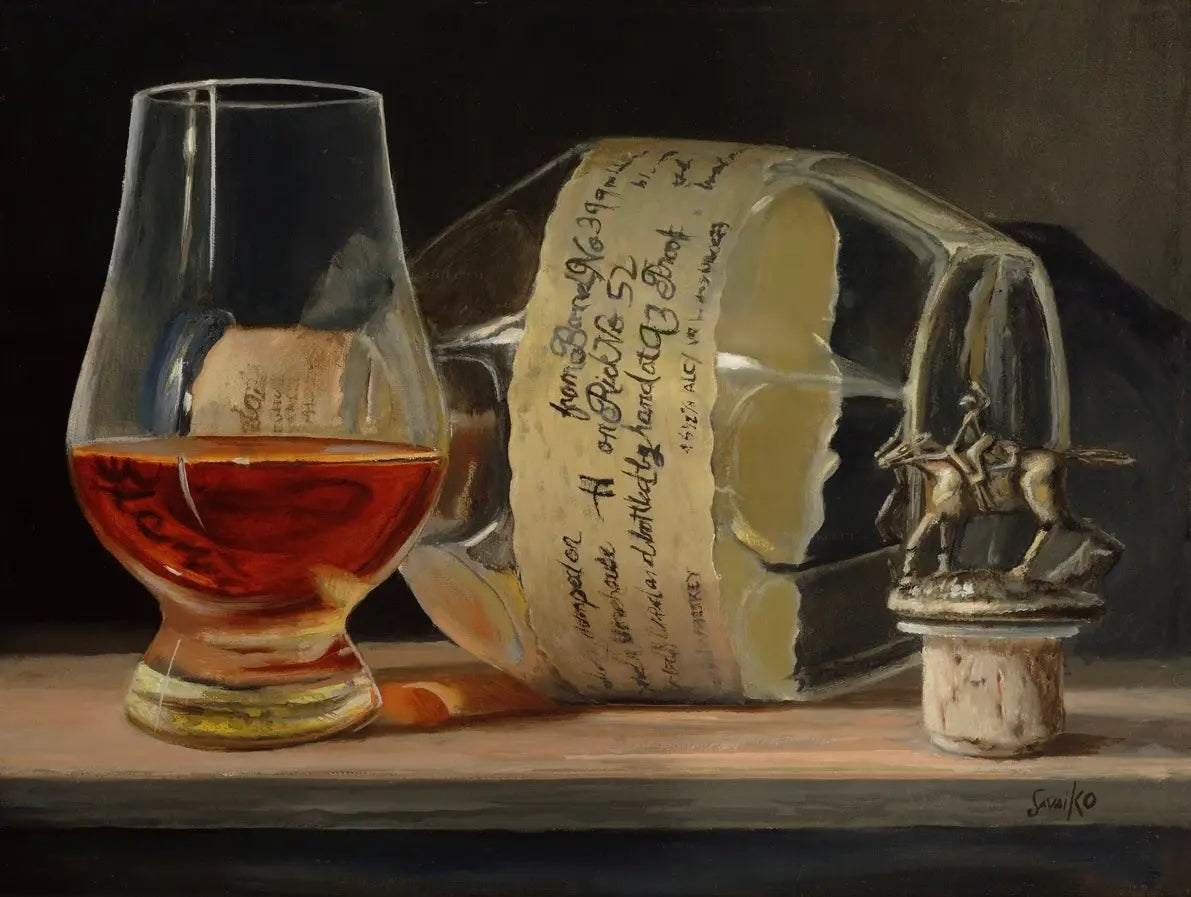Introducing the Charm of Bourbon Art: A Homage to Craft Distillers
Introducing the Charm of Bourbon Art: A Homage to Craft Distillers
Blog Article
The Significance of Whiskey Art in Celebrating Heritage and Workmanship in the Beverage Industry
The complex connection in between scotch art and the event of heritage and craftsmanship within the beverage industry can not be overstated. Through thoughtfully designed labels and containers, scotch brands encapsulate their historical roots and the artisanal abilities that specify their manufacturing techniques. This creative dimension not only boosts market allure however likewise serves as a conduit for social narration, promoting a deeper link in between the consumer and the craft. As we explore the numerous elements of this subject, appealing concerns about the impact of modern-day patterns on conventional techniques emerge, triggering further examination.
The Historical Origins of Whiskey
At the heart of bourbon's appeal exists a rich tapestry of historic roots that trace back to ancient civilizations. The beginnings of scotch can be linked to the purification methods of the Sumerians and Babylonians around 2000 BCE, where very early forms of fermented grain drinks began to arise. It was in the Center Ages that the art of purification developed dramatically, especially in Ireland and Scotland, leading to the production of whiskey as we understand it today.
The term "bourbon" itself derives from the Gaelic word "uisce beatha," implying "water of life." This expression emphasizes the cultural relevance of bourbon in Celtic societies, where it was typically linked with rituals, celebrations, and common bonding. By the 15th century, purification came to be a recognized craft within monastic neighborhoods, leading the way for the facility of lawful distilleries.
As trade paths increased, scotch's appeal expanded, transcending regional limits and catching the passion of lovers worldwide. Realism Art. This historic trip reflects not only the craftsmanship behind whiskey production but also its important duty in social and social contexts, noting it as a substantial drink throughout background
Artistic Expression in Branding
Bourbon branding stands as an engaging junction of virtuosity and commerce, where aesthetic identification plays an essential role in shaping consumer perception. The looks of scotch labels, product packaging, and advertising and marketing products mirror not just the brand's story but also its core worths and heritage. Via creative expression, distilleries share a story that reverberates with consumers, evoking feelings and triggering links.
The usage of color, typography, and images in branding serves to distinguish items in a saturated market. For instance, conventional concepts may evoke a feeling of authenticity and workmanship, while modern-day styles can represent innovation and forward-thinking. This strategic creative instructions improves brand name recognition and commitment, allowing customers to build an individual connection with the bourbon they select.
In addition, artistic expression in branding usually serves as a party of regional heritage. Distilleries often include local symbols or historical references into their layouts, creating a sense of area that invites consumers to take part in a broader social experience. Eventually, the virtuosity behind whiskey branding not only enhances aesthetic allure but likewise improves the total narrative of the brand, promoting a much deeper gratitude for the craftsmanship and heritage ingrained in each container.
Craftsmanship in Bottle Style
The creativity evident in whiskey branding prolongs past aesthetic identification to incorporate the craftsmanship involved in bottle style. Each container functions as a vessel not just for the spirit within, however likewise for the story it informs regarding its custom, high quality, and beginning. The style procedure requires meticulous attention to detail, as elements such as material, closure, and shape add dramatically to the total assumption of the scotch.
Craftsmanship in bottle design involves picking top quality glass that can enhance the whiskey's shade and quality, while likewise offering a tactile experience for the customer. The shape of the container must be both useful and visually attractive, commonly showing the heritage of the brand. Several distilleries go with special shapes or embossed logo designs that evoke a feeling of credibility and history.
In addition, the tag design and typography play a crucial duty in communicating the brand name's story. Bourbon Art. A well-crafted container not only astounds the consumer's eye but likewise reinforces the brand name's commitment to top quality and tradition. In this means, the craftsmanship of container design comes to be an important aspect of the scotch experience, combining creativity with an extensive regard for heritage
Social Value of Whiskey Art
Commemorating tradition and craftsmanship, the cultural importance of scotch art goes beyond mere appearances, intertwining with the social and historic stories of the areas from which it originates. Each bottle works as a canvas, illustrating the one-of-a-kind tales, mythology, and practices that have actually shaped local whiskey-making techniques. The elaborate layouts commonly useful reference show the heritage of the distillers, integrating icons and concepts that reverberate with the society and worths of their neighborhoods.
Furthermore, whiskey art plays an essential function in public events and parties, functioning as a concrete web link in between individuals and their shared experiences. By valuing the creativity in whiskey product packaging, consumers cultivate a much deeper understanding and respect for site the craft, eventually enriching their pleasure of the drink itself.
Modern Trends in Whiskey Presentation
In recent times, the presentation of whiskey has advanced to reflect contemporary preferences and trends while still honoring typical craftsmanship - Whiskey Art. Distilleries are significantly focusing on aesthetic aspects that boost the general alcohol consumption experience, bridging the space in between heritage and modernity
Cutting-edge container designs have arised, usually incorporating sustainable products and imaginative labels that tell compelling stories. Lots of brand names currently collaborate with local artists, infusing their products with unique visual expressions that resonate with consumers. Furthermore, limited-edition releases are commonly packaged in collectible containers, including worth and allure for aficionados.

Verdict
In verdict, bourbon art serves as a crucial avenue for sharing the heritage and workmanship intrinsic in the drink market. With elaborate branding, ingenious bottle designs, and culturally significant artistic components, bourbon brand names successfully recognize their customs and connect with consumers.


Workmanship in bottle design involves picking high-quality glass that can boost the bourbon's color and clarity, while also giving a tactile experience for the customer. In this means, the craftsmanship of bottle layout comes to be an important aspect of the bourbon experience, combining creativity with a profound regard for heritage.
In final thought, whiskey art offers as a crucial conduit for sharing the heritage and workmanship fundamental in the drink market.
Report this page